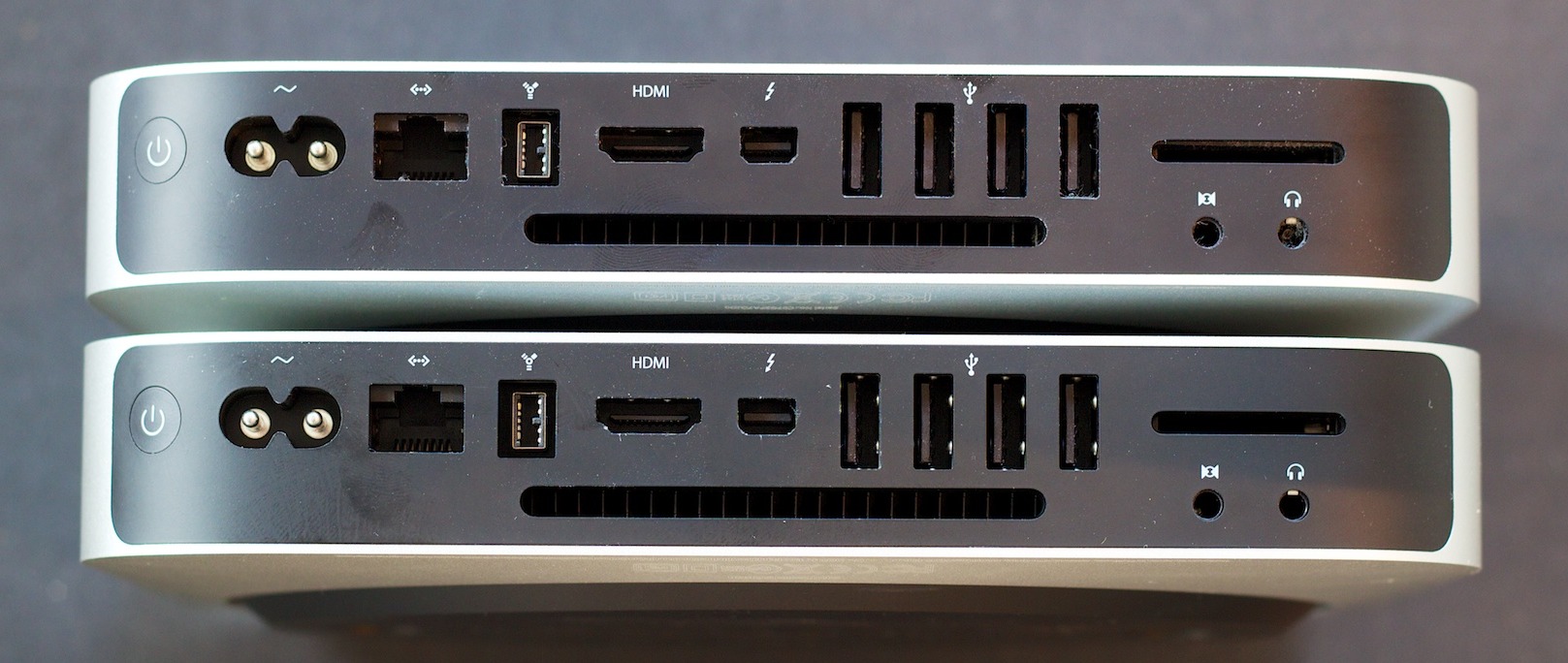

- Max memory for mac mini late 2012 2.5 ghz core i5 install#
- Max memory for mac mini late 2012 2.5 ghz core i5 upgrade#
I'm not privy to the technique OSX is currently using, but paging mechanisms will normally need to store and retrieve pages in a more random access manner again, this can encourage more uneven wear on the SSD. Moreover, the test they used wrote data sequentially. I would think a normal user will have a lot more data stored in their SSD, and I doubt OSX's swapfile mechanism will be quite as convenient for wear-leveling it is possible that a smaller section of the SSD will get hit harder by paging activity. This is going to be quite favorable to the SSD's wear-leveling algorithm. The technique the writers of that article used to force-feed data to those SSDs involved writing files to a nearly empty drive (only 10GB of "static data"), erasing them, and rewriting them. I will certainly admit that you've gotta be using your computer in a fairly unusual manner to cause it to thrash heavily. You can rack up enormous amounts of I/O very quickly. Still, thrashing means you are constantly swapping data back and forth to the drive, just as fast as the computer can manage it.

Mac mini (Late 2012) 16GB RAM 2.5GHz i5 Intel HD Graphics 4000 500GB HD. But with the speed of an SSD, you might not really notice the problem. Late 2012 Apple Mac mini A1347 2.5 GHz Core i5-3210M 4 GB RAM 500GB HDD OS 10.15. 90 at Amazon Besides adding an SSD, the next best thing to do to give your old Mac Mini some additional legs for present-day computing is to add more RAM.
Max memory for mac mini late 2012 2.5 ghz core i5 install#
When you're using magnetic media, thrashing will slow the machine down so much that it's practically unusable. The most you can install in the 2012 Mac Mini, 16GB of RAM is a great performance upgrade, and this kit from Crucial will slot right in. This is still not a problem if the machine is using just a little bit over its maximum RAM but if it's way over, the paging will happen continuously. Then, when that data is needed again, it moves more pages to the HD and pulls the old pages back in. Instead, it moves "pages" of data out of RAM in order to make more room. (Although an SSD will certainly help if your Swap value is high, you really don't want to use an SSD as if it were extra RAM those things are expensive, and constantly swapping memory back and forth from them will certainly lower their lifespan.)Īh! Have you ever heard the term Thrashing? When an operating system runs completely out of RAM and begins paging sections of RAM out to the hard drive (or in this case the SSD), it does not write to the drive in the same manner that is used when storing or loading files. If those values are large (into the gigabytes or more), you'll definitely see an improvement the worse those two values get, the slower your machine will get. If those values are zero (or very small), you will see no improvement from additional RAM - you aren't really using all the ram you already have. The two values at the very bottom, "Swap Used" and "Compressed", will tell you if you'll see any benefit at all from additional ram. If you select the "Memory" tab at the top, you'll get a list of the current tasks sorted by their memory usage, followed at the bottom of the window with some statistics (and a "Memory Pressure" graph).

Which, as it turns out, is quite easy to check! The "Activity Monitor" app (normally located in the "Utilities" sub-folder of the "Applications" folder) can show you how much you are using. This computer still stands tall among competitors and will continue to stand tall for a long while regardless of the amount of development that happens in the computer world.The performance benefit you will see is entirely dependent on how much RAM you consume with your usage. It also had a powerful graphics processor included with its GeForce GT 750M graphics processor with 1 GB of dedicated GDDR5 memory with a built-in FaceTime HD camera.
Max memory for mac mini late 2012 2.5 ghz core i5 upgrade#
The basic components of a computer such as the RAM were upgraded as this model had an 8 GB of 1600 MHz PC3-12800 DDR3 SDRAM which could be upgraded on purchase to a 16 GB RAM but not recommended for an upgrade after even though it is a possibility. A number of more conventional features of a computer were absent – such a DVD drive slots and the FireWire ports that were traditional with the Apple iMac brand and new features appeared – such as the Thunderbolt port which allows for the passage of both visual and audio signal. The Apple iMac Intel Aluminum released September 2013 was another step in creativity in the world of computers.


 0 kommentar(er)
0 kommentar(er)
